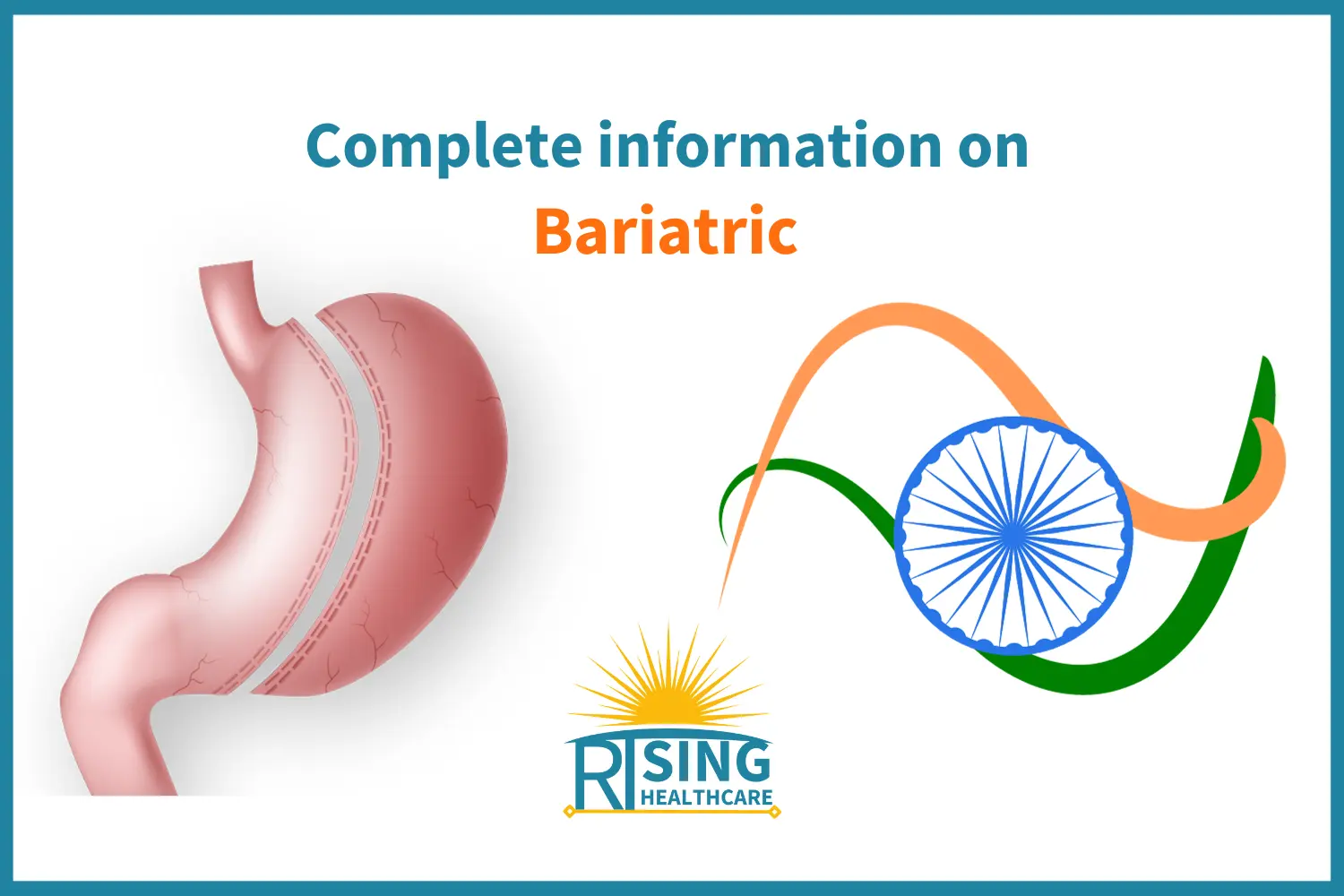
A Guide to Bariatric Surgery: Gastric Sleeve, Gastric Bypass, and Lap Band
Introduction
In a world where being healthy is a top priority, weight management plays a crucial role in our lives. Sometimes, however, traditional methods like diet and exercise may not be enough to help individuals struggling with severe obesity. This is where bariatric surgery comes into the picture. Bariatric surgery is a medical procedure designed to aid in weight loss for those who are significantly overweight and haven’t had success with other weight loss methods. In this comprehensive guide, we’ll explore the three main types of bariatric surgery: gastric sleeve, gastric bypass surgery, and lap band surgery.
Contents
Understanding Bariatric Surgery
Before diving into the specific types of bariatric surgeries, let’s first understand what bariatric surgery is and who it’s intended for.
1.1 What is Bariatric Surgery?
Bariatric surgery, often referred to as weight loss surgery, is a medical procedure performed on people struggling with obesity. It aims to help individuals lose weight and improve or resolve weight-related health issues such as type 2 diabetes, high blood pressure, sleep apnea, and more. Bariatric surgery isn’t a quick fix or a one-size-fits-all solution, but rather a tool to assist individuals in their weight loss journey.
1.2 Who is a Candidate for Bariatric Surgery?
Not everyone struggling with excess weight is a candidate for bariatric surgery. Typically, candidates are individuals with a body mass index (BMI) of 40 or higher, or those with a BMI of 35-39.9 who also have significant obesity-related health issues. It’s important to note that candidates must meet certain criteria and undergo a thorough evaluation by a healthcare professional to determine if bariatric surgery is the right choice for them.
Gastric Sleeve Surgery
Gastric sleeve surgery, also known as sleeve gastrectomy, is one of the most common types of bariatric surgery. It involves removing a portion of the stomach to create a smaller, sleeve-shaped stomach pouch. This smaller stomach restricts the amount of food a person can eat, leading to reduced calorie intake and weight loss.
2.1 How Gastric Sleeve Surgery Works
During gastric sleeve surgery, a surgeon removes approximately 80% of the stomach, leaving behind a banana-shaped pouch. This pouch can hold only a small amount of food, leading to early feelings of fullness and reduced appetite. As a result, patients eat less and lose weight gradually over time.
2.2 Advantages of Gastric Sleeve Surgery
Gastric sleeve surgery has several advantages, including:
- Effective weight loss: Patients can expect to lose a significant amount of weight, often achieving a 50-70% reduction in excess body weight.
- Improved health: Many obesity-related health issues, such as type 2 diabetes and high blood pressure, may improve or resolve after gastric sleeve surgery.
- Simplicity: Unlike some other bariatric procedures, gastric sleeve surgery doesn’t involve rerouting the intestines, making it a simpler and less invasive option.
2.3 Risks and Considerations
While gastric sleeve surgery can be highly effective, it’s not without risks. Some potential risks and considerations include:
- Post-operative lifestyle changes: Patients must make lifelong dietary and lifestyle changes to maintain their weight loss.
- Nutritional deficiencies: Reduced stomach size can lead to nutrient deficiencies, so patients must take supplements as advised by their healthcare team.
- Possible complications: As with any surgery, there are risks of complications, such as infection, bleeding, and leaks at the surgical site.
Gastric Bypass Surgery
Gastric bypass surgery, also known as Roux-en-Y gastric bypass, is another popular bariatric procedure. It involves creating a small stomach pouch and rerouting the intestines to change the way the body absorbs calories and nutrients.
3.1 How Gastric Bypass Surgery Works
During gastric bypass surgery, the surgeon divides the stomach into a small upper pouch and a larger lower pouch. The small intestine is then rearranged to connect to both pouches. This rerouting of the intestines limits the absorption of calories and nutrients, leading to weight loss.
3.2 Advantages of Gastric Bypass Surgery
Gastric bypass surgery offers several advantages, including:
- Significant weight loss: Patients can lose up to 60-80% of their excess body weight within the first year after surgery.
- Improved health: Many obesity-related health issues, such as type 2 diabetes and sleep apnea, often improve or resolve after gastric bypass.
- Reduced appetite: The procedure alters hormones that regulate appetite, helping patients feel full more quickly and eat less.
3.3 Risks and Considerations
While gastric bypass surgery can be highly effective, it also carries risks and considerations, such as:
- Lifelong dietary changes: Patients must adhere to a strict dietary plan to prevent complications and maintain weight loss.
- Nutritional deficiencies: Reduced nutrient absorption can lead to deficiencies, so patients must take supplements and undergo regular monitoring.
- Potential complications: As with any surgery, there are risks of complications, including infection, bleeding, and issues related to the rerouted intestines.
Lap Band Surgery
- Lap band surgery, also known as adjustable gastric banding, is a less invasive bariatric procedure. It involves placing a band around the upper part of the stomach to create a small pouch, restricting food intake.4.1 How Lap Band Surgery WorksDuring lap band surgery, a silicone band with an inflatable balloon on the inside is placed around the upper part of the stomach. This band can be adjusted by adding or removing saline through a port located under the skin. By inflating the band, the size of the stomach pouch can be reduced, leading to reduced food intake.
4.2 Advantages of Lap Band Surgery
Lap band surgery offers several advantages, including:
- Adjustability: The band can be adjusted to match the patient’s weight loss progress and changing needs.
- Reversibility: Unlike other bariatric procedures, lap band surgery can be reversed by removing the band.
- Low risk of nutritional deficiencies: Lap band surgery does not interfere with nutrient absorption in the same way as gastric bypass or gastric sleeve surgery.
4.3 Risks and Considerations
Lap band surgery has its own set of risks and considerations, including:
- Slower weight loss: Weight loss with lap band surgery tends to be slower and less dramatic compared to other procedures.
- Band-related issues: There is a risk of complications related to the band, such as slippage or erosion, which may require additional surgery.
- Lifelong follow-up: Patients need regular follow-up appointments for band adjustments and monitoring.
Life After Bariatric Surgery
No matter which type of bariatric surgery a person undergoes, life after the procedure requires commitment to a new lifestyle. Here are some important aspects to consider:
5.1 Dietary Changes
After bariatric surgery, patients must adopt a modified diet that focuses on smaller portion sizes, nutrient-dense foods, and adequate hydration. It’s essential to work closely with a registered dietitian to develop a customized meal plan.
5.2 Exercise and Physical Activity
Regular physical activity is essential for maintaining weight loss and overall health. Patients should incorporate exercise into their daily routine, following their healthcare team’s recommendations.
5.3 Follow-Up Care
Continued follow-up care is crucial to monitor progress and address any issues that may arise. Patients should attend regular appointments with their healthcare team, including surgeons, dietitians, and psychologists.
5.4 Support and Counseling
Many individuals find it helpful to seek support and counseling, both before and after bariatric surgery. Support groups and mental health professionals can assist with the emotional and psychological aspects of weight loss.
Conclusion
Bariatric surgery offers hope and a second chance at a healthier life for individuals struggling with severe obesity. Gastric sleeve, gastric bypass surgery, and lap band surgery are three viable options, each with its own advantages and considerations. However, it’s crucial to remember that bariatric surgery is not a one-size-fits-all solution, and success requires commitment to lifestyle changes and ongoing medical care. If you or a loved one are considering bariatric surgery, consult with a healthcare professional to determine the most suitable approach for your unique needs and circumstances.

